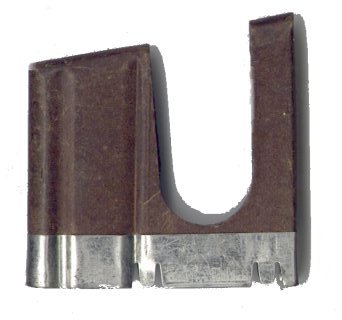

In stark contrast to their high quality rifles, the chargers used to feed the Swiss rifles seem cheap by comparison. The chargers are made out of a cardboard or fiberboard (perhaps referred to as Pasteboard) , with tinned steel strips to reinforce the base of the chargers. Despite their rather fragile sounding construction, they seem to be fairly sturdy. The cardboard is impregnated with wax or resin. This gives the cardboard a degree of firmness as well as a degree of water resistance. I placed a clip under running water, and the water beaded up and ran off. Next, I let the clip get wet, but did not allow the water to drain off, and instead let it sit for 8 hours, with the beaded up water still in place. The clip showed some discoloration, but no real damage was apparent. Apparently, the cardboard is quite water resistant. Also, fully loading the clip with all six rounds also enhances the overall rigidity of the clip. Just how durable the chargers are remains to be seen, but I believe that the chargers can be re-used at least 10 times before they loose their shape and holding capacity.
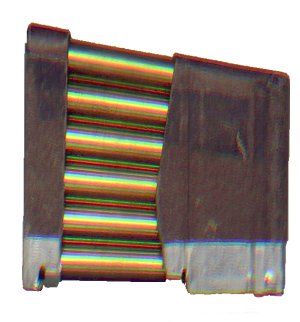
note: this clip is loaded with 6 rounds of Norma 200gr
Hollowpoints
As can be seen from the above graphic, the Swiss Chargers holds six round. Thus one charger is sufficient to load a 96/11, 1911 or a K31 magazine. Two chargers would be needed to fill the 1889's 12 round magazine

(left) Pre-K31 clip (right) K31 clip
There are two versions of the charger. The earlier type chargers had only a single groove near the front of the clip. The earlier chargers were used with Model 89s and 11s. The later type, intended to be used with the K31 had a second groove, which matches the contour of the K31 magazine. Older style chargers reportedly don't work as well with K31 magazines.
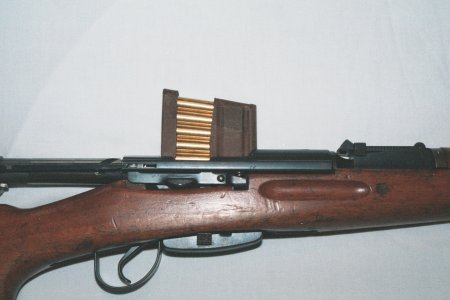 .
.
Chargers are inserted into slots in the receiver bridge, then pressed down into the magazine with the thumb. The Swiss chargers fit into the receiver with little room to spare, providing for positive feeding of rounds into the magazine..
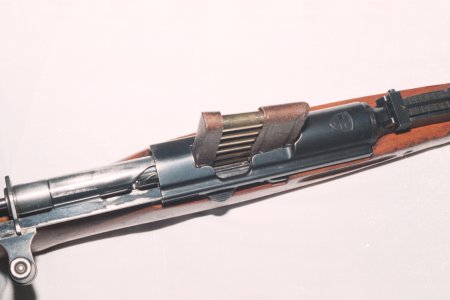
Brown is the standard color for Swiss Chargers, although other color, used with specialty ammunition, have been reported. Specifically, Red- Dummy cartridges, Violet- Lead clad steel core bullet, and White- Maneuver ammunition: hollow wooden bullet and plastic mantle.
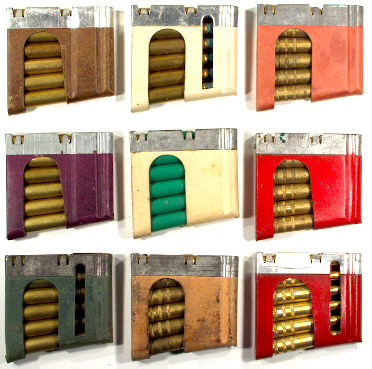
Top Row: Standard Charger, Charger for Blanks, Charger with Brass Dummy Rounds
Middle Row: Armor Piercing Rounds Charger, Charger for Blanks, Charger with
Brass Dummy Rounds
Bottom Row: Old Style Blank Charger, Old Style Brass Dummy Charger, Charger with
Brass Dummy Rounds

The Swiss experimented with standard metal stripper clips. Cuts to accommodate the metal stripper clips can be found on the Model 1896/11, 1911 rifle and carbine, and K31. However, the Swiss never adopted the metal, and surviving examples are rare.
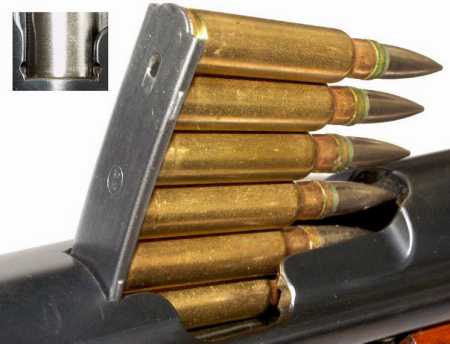
A prototype Swiss Stripper Clip
I've tested several other type of clips, and here is what I've found so far. Swedish Mauser clips work. Although, they only hold five rounds, and can be difficult to position for positive feeding. In fact, you can almost insert the entire clip and rounds into the magazine without stripping any rounds off. This is compensated by the fact, that the Swede clips are cheaper, more readily available, and more durable, being if all metal construction.
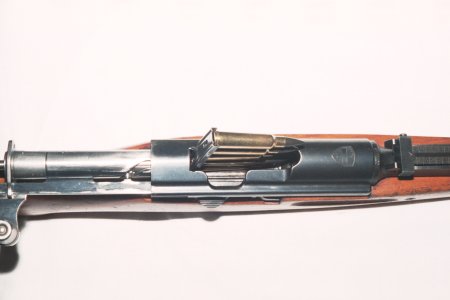
Mosin-Nagant 7.62x54 clips work better than the 6.5x55 clips, as they fit in the grooves better. 7.5 French clip also work slightly better than the 6.5x55 clips. The clips are less likely to slip into the magazine, although the rounds don't strip off the clip very smoothly.
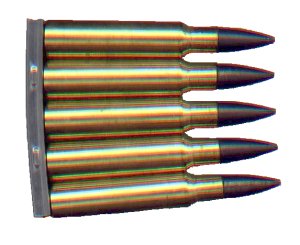
note: this clip is loaded with 5 rounds of Norma 200gr
Hollowpoints
7.5 Swiss rounds will fit in 30-06 stripper clips,
but the the fit is too tight, and the rounds would not strip off the clip.
7.62 NATO, 8mm Mauser, and .303 British stripper clips are too small.